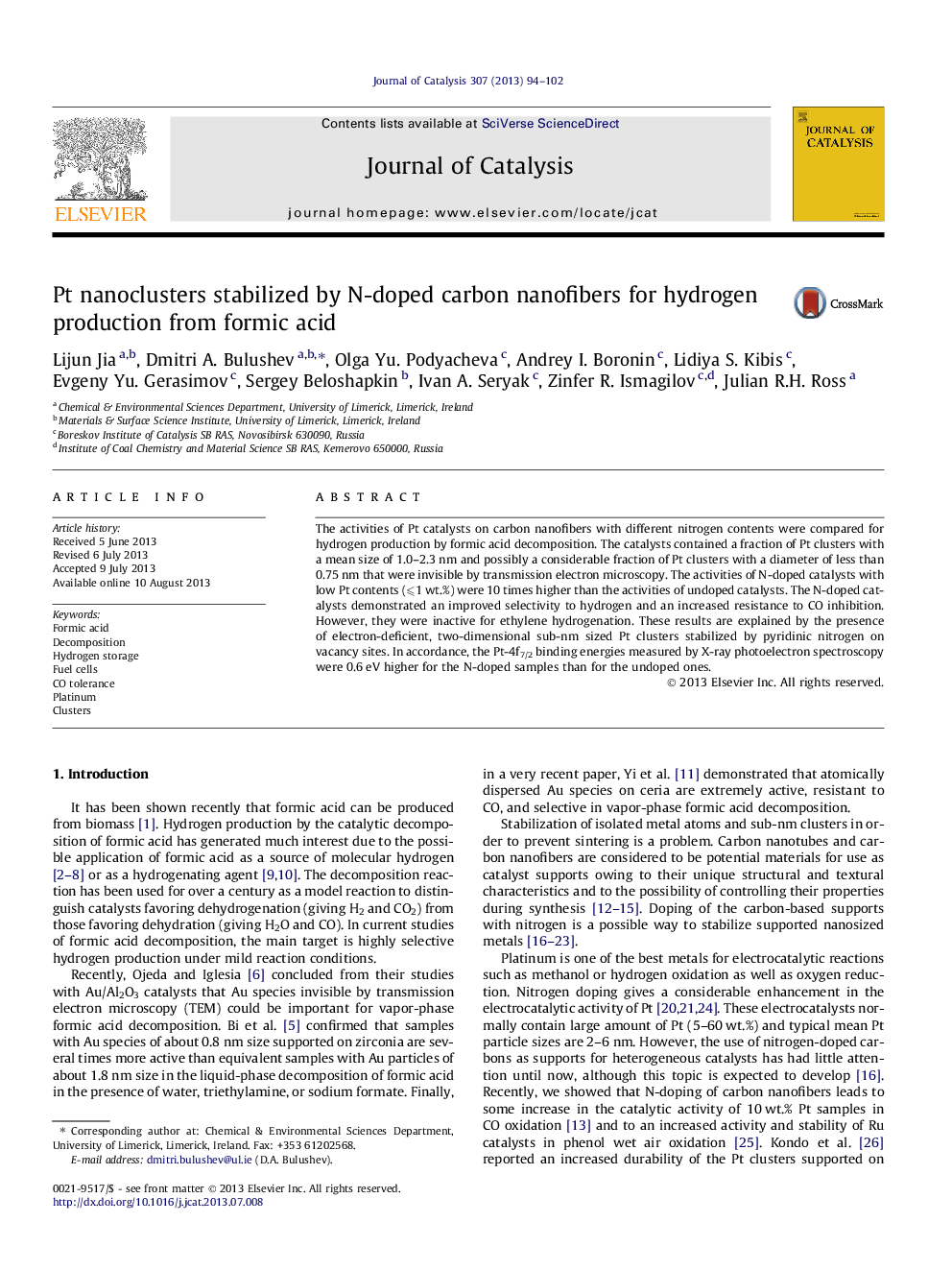| Article ID | Journal | Published Year | Pages | File Type |
|---|---|---|---|---|
| 61150 | Journal of Catalysis | 2013 | 9 Pages |
•Pt catalysts on N-doped carbon nanofibers were studied in HCOOH decomposition.•All catalysts contained a considerable fraction of sub-nm sized Pt clusters.•The N-doped catalysts were about 10 times more active than the undoped catalysts.•They were also more selective and resistant to CO inhibition.•Electron-deficient Pt clusters on the N-doped carbon provided that performance.
The activities of Pt catalysts on carbon nanofibers with different nitrogen contents were compared for hydrogen production by formic acid decomposition. The catalysts contained a fraction of Pt clusters with a mean size of 1.0–2.3 nm and possibly a considerable fraction of Pt clusters with a diameter of less than 0.75 nm that were invisible by transmission electron microscopy. The activities of N-doped catalysts with low Pt contents (⩽1 wt.%) were 10 times higher than the activities of undoped catalysts. The N-doped catalysts demonstrated an improved selectivity to hydrogen and an increased resistance to CO inhibition. However, they were inactive for ethylene hydrogenation. These results are explained by the presence of electron-deficient, two-dimensional sub-nm sized Pt clusters stabilized by pyridinic nitrogen on vacancy sites. In accordance, the Pt-4f7/2 binding energies measured by X-ray photoelectron spectroscopy were 0.6 eV higher for the N-doped samples than for the undoped ones.
Graphical abstractPt nanoclusters supported on nitrogen-doped carbon nanofibers have shown a considerably improved performance in hydrogen production from formic acid than Pt nanoclusters on undoped carbon nanofibers.Figure optionsDownload full-size imageDownload high-quality image (74 K)Download as PowerPoint slide
